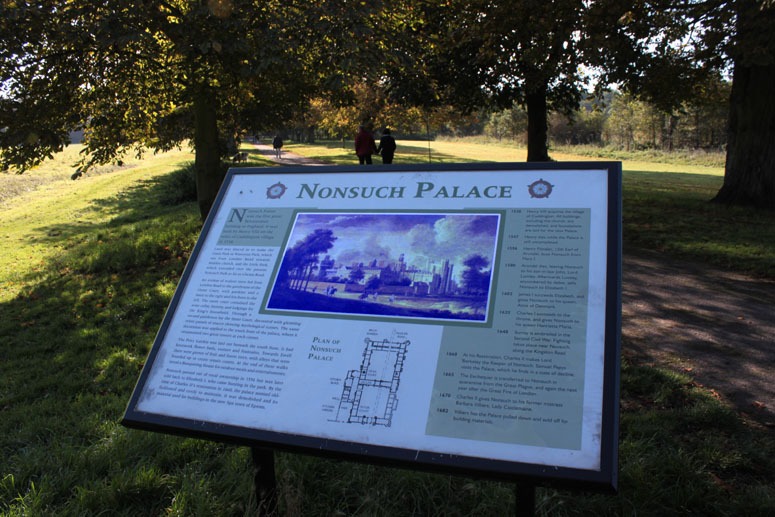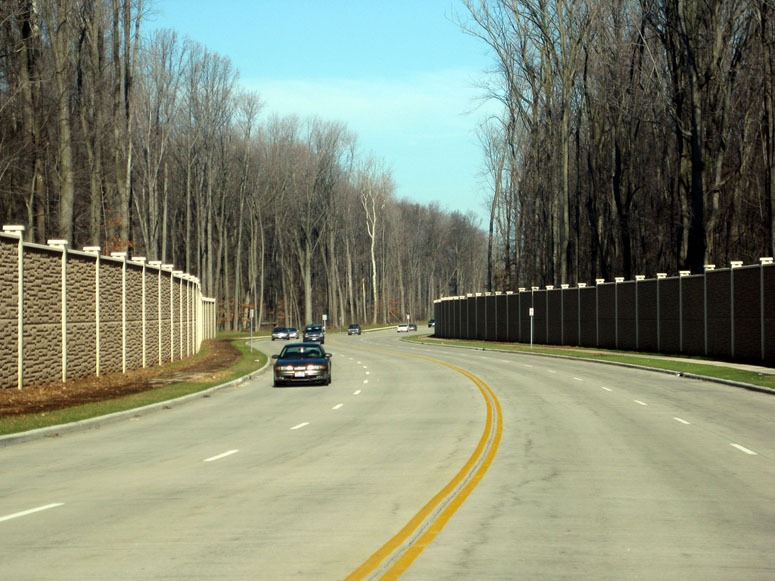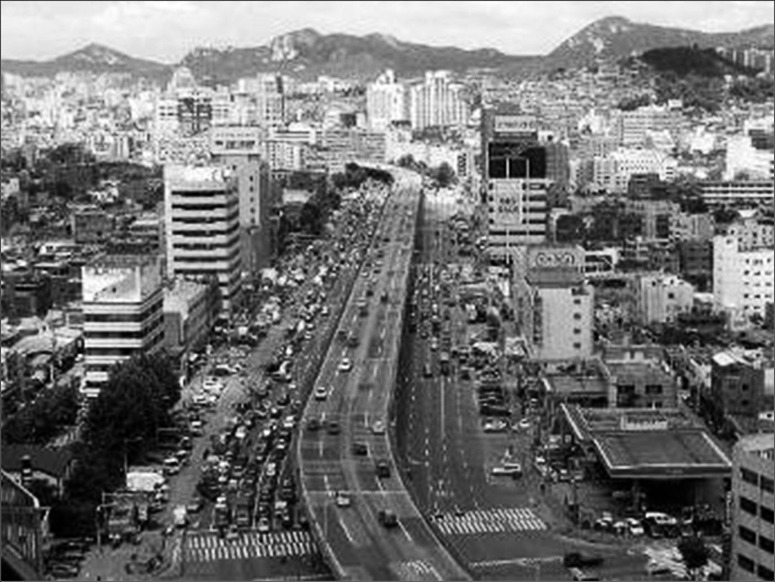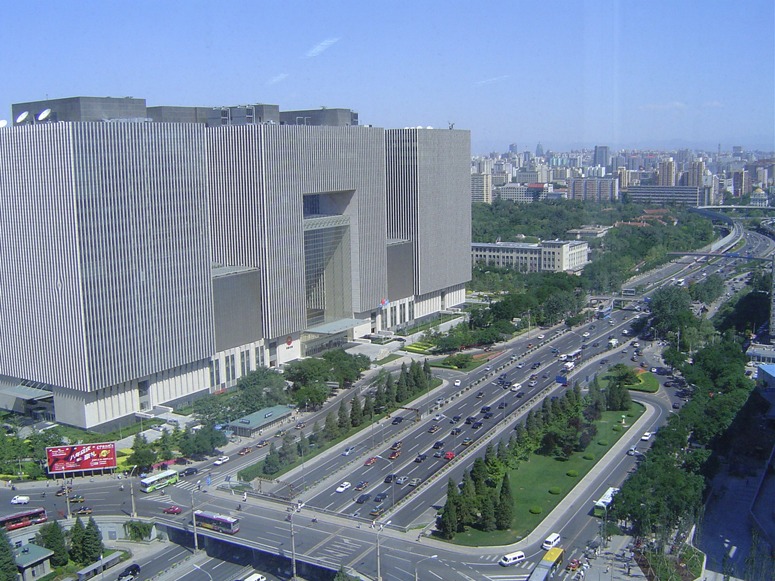The autumn weather was beautiful and I went to see the Nonsuch garden today. Little survives and I agree with the local Nonsuch historians that it represents ‘both a responsibility and a challenge.. [regarding] the proper management, preservation, and presentation of the site of one of the great houses and gardens of England’. A simple first step would be to attempt a re-creation of one of the Knot gardens shown on John Speed’s plan of Nonsuch. The plan was drawn in 1610 and a re-created knot would make a great contribution to garden history, for a small outlay. Since various interpretations of Speed’s drawing are possible, a different knot could be produced each year and they could become famous.
Monthly Archives: October 2010
Non-environmental noise barriers
Image courtesy bankbryan
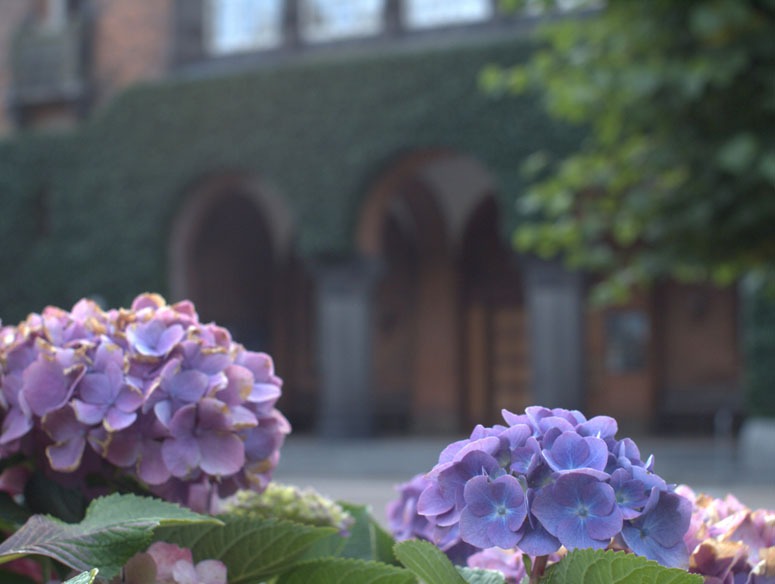
Image courtesy Sigfrid Lundberg
The view that changed the world and its gardens: what Petrarch saw from Mount Ventoux
“To-day I made the ascent of the highest mountain in this region, which is not improperly called Ventosum [Mount Ventoux]. My only motive was the wish to see what so great an elevation had to offer. I have had the expedition in mind for many years; for, as you know, I have lived in this region from infancy, having been cast here by that fate which determines the affairs of men. Consequently the mountain, which is visible from a great distance, was ever before my eyes, and I conceived the plan of some time doing what I have at last accomplished to-day. The idea took hold upon me with especial force when, in re-reading Livy’s History of Rome, yesterday, I happened upon the place where Philip of Macedon, the same who waged war against the Romans, ascended Mount Haemus in Thessaly, from whose summit he was able, it is said, to see two seas, the Adriatic and the Euxine…. At first, owing to the unaccustomed quality of the air and the effect of the great sweep of view spread out before me, I stood like one dazed. I beheld the clouds under our feet, and what I had read of Athos and Olympus seemed less incredible as I myself witnessed the same things from a mountain of less fame. I turned my eyes toward Italy, whither my heart most inclined. The Alps, rugged and snow-capped, seemed to rise close by, although they were really at a great distance; the very same Alps through which that fierce enemy of the Roman name once made his way, bursting the rocks, if we may believe the report, by the application of vinegar. I sighed, I must confess, for the skies of Italy, which I beheld rather with my mind than with my eyes. An inexpressible longing came over rne to see once more my friend and my country.
Happy the man who is skilled to understand
Nature’s hid causes; who beneath his feet
All terrors casts, and death’s relentless doom,
And the loud roar of greedy Acheron.
“
PS apologies for using the hackneyed ‘changed the world’ header for this post.
Will China become a Nation of Gardeners?
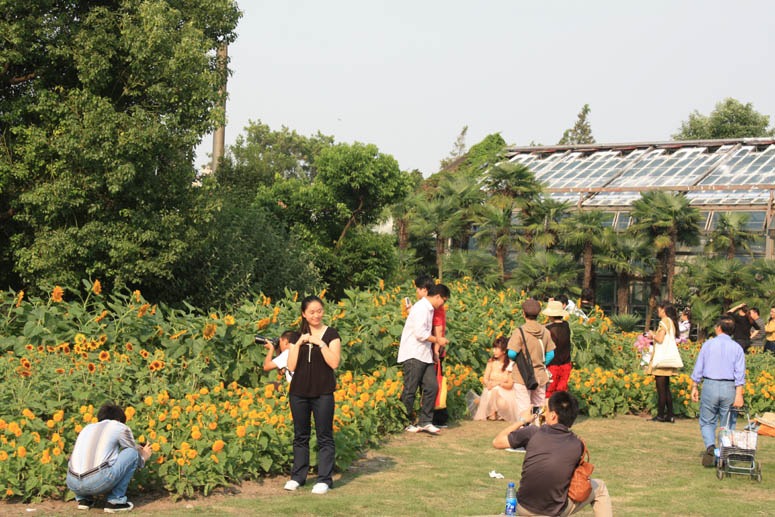
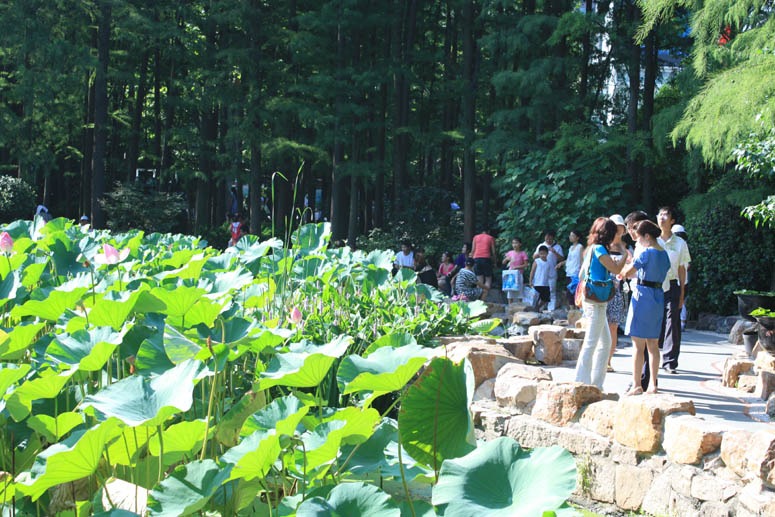
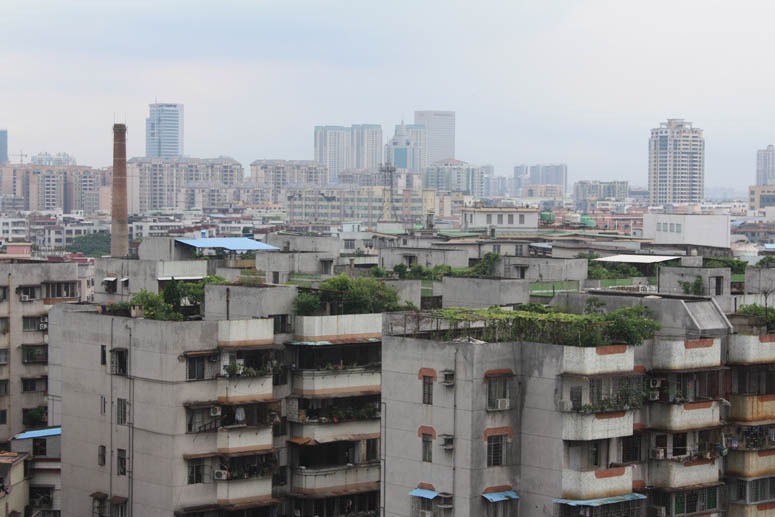
One thing that strikes visitors to China immediately is the love of the population for flowers. Large, colourful blooms are the most popular and plantations are often visibly stressed by the masses of photographers that swarm over them. The best displays attract large crowds throughout the day and into the evening. Even on the rooftops – where they are accessible – burgeoning green is to be seen everywhere and salesmen on tricycles with impossible quantities of potted plants tour the urban streets where I live. If eating well is said to be one of China’s foremost hobbies, then gardening, or the appreciation of gardens, must also be high up the scale. Who knows what might happen when this emotional bond makes the leap to landscape architecture on the larger scale? And when might this take place? Perhaps, as in Seoul, a process of review will take place on the newly built environment in the not too far distant future and then the Chinese people will surprise us all – as they already have in so many other areas of life – with cityscapes that will be the envy of the western world.
Cheonggyecheon river reclamation and landscape architecture in Seoul, Korea
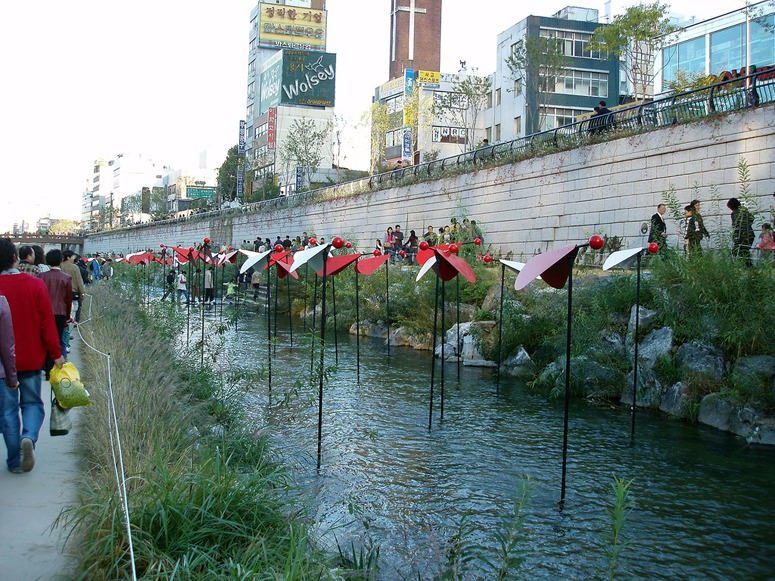
Brilliant landscape planning, and dreary landscape architecture, for the Cheonggyecheon River in Seoul, Korea
Korea has implemented a brilliantly ambitious and life-enhancing river restoration project which, unfortunately, is no masterpiece for Korean landscape architecture or garden design. Seoul, formerly Hanyang became Korea’s capital city in 1394 and a new city was built beside the lovely Cheonggyecheon River. Floods arrived from time to time but King Taejong (1400-1418) believed that nature should be allowed to run its course. A great stone bridge was built and the valley became a resort, a laundry, a children’s playground, a place for lantern festivals – and a sewer. During the Japanese occupation (1910-1945) the river was ‘improved’ in the sense of being dredged to protect the occupier’s property. Korean engineers decided the river should be buried and by 1967 it had disappeared from view. Construction of the Cheonggye Elevated Highway began in 1967 and was completed in 1976. It was built above the buried river. An elevated highway was then built above the valley It took 20 years to complete the project. The highway, 50-80m wide and 6km long, was opened in 1984. So far – so awful. But for the great good fortune of the Seoul’s citizens, the engineers were lousey and the steel beams began to rot. A report from the Korean Society of Civil Engineering, in 1992, recommended repairs. The programme of repairs went on for a decade but was innefective.
It was for this reason that the Cheonggyecheon Restoration Project was formulated. Engineers promised to transform Seoul’s grey concrete image. Their professed goal was “a lush, green city where clear waters flow. Through this and other such projects, Seoul will be re-born as a human-oriented environmental city, greatly increasing Seoul’s ‘brand’ value.” Tragically, the project was run by engineers and architects, with some planting, fountains, exterior lighting and ‘works of art’ stuffed in at the last minute. The result can be classed as brilliant landscape planning with crap landscape architecture. It is a terrible wind corridor and looks like the defensive ditch outside a walled Chinese city. Next time, they should make landscape architects the project co-ordinators.
I wish the UK had a river restoration project which was half as good as the Cheonggyecheon project – restoration of the River Fleet would be a good start. But the Koreans do seem to have learned something from the UK. Just as the Dunkirk disaster of June 1940 was proclaimed a victory, so the Cheonggyecheon disaster (photo below) is being presented as a triumph. Both boasts did some good and Seol has been nominated as the World Design Capital for 2010, partly on account of the Cheonggyecheon river reclamation. Still, I don’t think they read my chapter on River engineering, channelization and floods
How many qualified Chinese landscape architects are there? – and how many does China need? 中国有多少具有从业资格的风景园林设计师?中国需要多少这样的风景园林师?
My view, based on the experience of other countries, is that China will need a professionally recognized landscape architecture profession. This differs from the professions of architecture, urban planning, horticulture, environmental design etc. The fundamental skill is in the composition of five elements (landform, planting, water, buildings and paving) to create good places. These places, as Ian Thompson argued (in Ecology, Community and Delight: sources of value in landscape architecture) should be ecologically good, visually good and socially good – in combination or in isolation. This is exactly the skill which was used to make the Imperial Parks and Classical Gardens of Ancient China but if students have a limited education they will not be equal to the task. For example (1) architects and urban designers do not know enough about landfom, water and planting (2) horticulturalists and environmental designers do not know enough about aesthetics, or about structures, or about the social use of outdoor space (3) ecologists and geographers do not know enough about landscape art or basic landscape design.
As to the number of landscape architects China needs, or rather needed 25 years ago, one can make a simple estimate based on the number of landscape architects/head of population in Europe: my estimate is 120,000. But one could argue that if China’s middle class has 80m people then it ‘only’ needs the same number of landscape architects as Germany. Comments welcome – I am not Chinese and do not know the country well.
(Image courtesy P.)
Many thanks to Poppy for this translation into Chinese:
中国具备多少具有从业资格的风景园林师? 中国需要多少这样的风景园林师?
中国的城市化进程超越了任何其他国家,因此对风景园林师的需求也是超越任何其他国家的。一位中国朋友告诉我,目前中国有独立对建筑师,城市规划师的两类资格评估。在2009年,具有资格的建筑师18,639名,具有资格的城市规划师16,000名。在中国还没有对风景园林师的官方认证,而只有在公司和机构中的成员能够取得建筑师,城市规划师,风景园林师,环境设计师,园艺师,其他专业的资质评审。
基于对其他国家的了解,我认为中国需要一个对风景园林从业人员的专业认证。这个认证将有别于建筑设计,城市规划,园艺,环境设计等等。风景园林设计的技能是基于对主要五种要素的组织(地形,种植,水,建筑,道路铺装)以创造出优美的场所。这样的场所,按照伊恩•汤普森所言(风景园林的价值来源于:生态学,社会学和给人带来愉悦),应该是有良好的生态性,良好的美学性和良好的社会性–共同具备或单一具备这样的特点。这是创造中国皇家园林和古典园林的精湛技艺,但是如果学生对此所受教育不够就不能胜任其职。 比如说:(1)建筑师和城市规划师对地形,水体和种植知之甚少。(2)园艺师,环境设计师的美学知识不够,也没有构造学,和户外空间的知识。(3)生态学家和地理学家基本不了解园林艺术和基本的设计常识。
关于中国需要风景园林师的数量,或者说25年前中国需要风景园林师的数量,我们可以估计一下,遵循一个简单的在欧洲的原则: 风景园林师的数量/人口数量。那么我的估计是中国需要120,000名风景园林师。然而,有人也会说如果中国的中产阶级有80,000,000人,那么所需风景园林师的数量就和德国一样。欢迎大家踊跃讨论,因为我不是中国人,对中国了解不没有中国人深刻。

